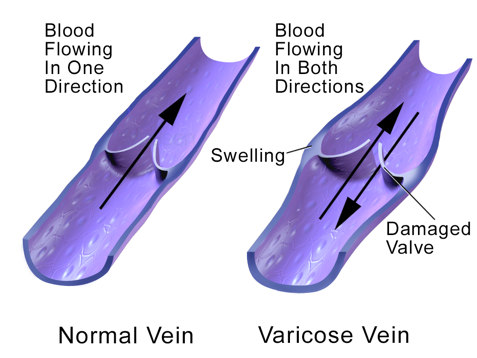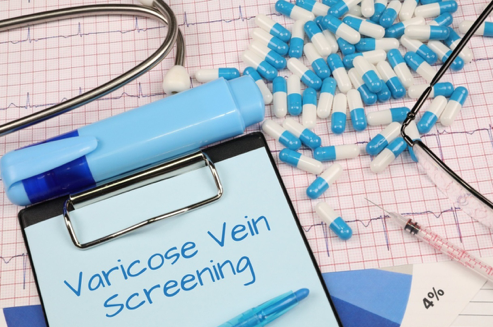What are the main varicose veins treatment options? Varicose Veins are swollen blood vessels that usually affect the lower body. Since they appear just under the surface of your skin, they’re quite visible. As a result, you’ll see blue and purple bulges on your legs, feet, or ankles.

(Source)
While they can be painful, they’re not as dangerous in most cases. In certain cases, however, severe varicose veins can lead to blood clotting, which is a serious health concern.
If the varicose veins aren’t as severe, they can even be treated at home or by your healthcare provider.
What Factors Increase Your Chances of Getting Varicose Veins?
While varicose veins can affect anyone, certain factors could increase the risk of developing them:
Inherited Condition
You may have an inherited condition that increases your chances of suffering from varicose veins
Age
The older you get, the weaker your vein walls become. As a consequence, they lose their elasticity, leading to increased chances of developing varicose veins.
Smoking
Smokers have a higher chance of developing this condition.
Gender
Female hormones cause the vein walls to stretch, making it likely that pregnant women or women on birth control pills will develop varicose veins.
Weight
Normally, overweight individuals have a higher chance of getting varicose veins because of increased pressure on the blood vessels.
When should you consult a Vascular Surgeon?
Bulging veins
Twisted veins under the surface of your skin may cause a specific region of your body to turn purple. It’s an obvious indication that you need to visit a vascular surgeon.
Heavy Legs
When walking, your leg muscles may feel heavy and tired.
Swelling
You start to see swelling in your ankles, feet, and legs
Pain
You feel a throbbing pain in your legs and suffer from muscle cramps.
Discoloration of Skin
You’ll start to see noticeable changes in the color of your skin because of varicose veins right below the surface of your skin. Mostly, you’ll see your ankle or leg changing color to blue or purple.

(Source)
Reasons for Getting Varicose Veins
Varicose veins are the result of your vein walls getting weaker, so when your blood pressure increases, the weakened vein walls cause the vein to grow bigger. As your vein stretches, your blood valves become less efficient, causing sluggish blood flow and blood clots in the veins. This leads to the vein bulging or swelling up.
Why Your Vein Walls Could be Weak?
- You wear restrictive clothing
- You’re suffering from aggravated pressure inside your veins
- You’re overweight, and excess weight is slowing down your blood flow.
- You’re older, and your vein walls are relatively thinner.
How Can You Treat Varicose Veins?
While there’s no cure for varicose veins, there are a few ways to reduce its occurrence.
Injection Therapy
More popularly known as sclerotherapy, doctors perform the procedure by injecting a solution into your vein. This causes the vein walls to join together.
Elevation
Normally, elevation doesn’t require the help of your healthcare provider and is something you can do at home. It means elevating your legs above your waist a few times throughout your day to increase blood flow and decrease the pressure in your veins.
Vein Surgery
It involves a procedure called ligation and stripping in which the surgeon ties the affected vein, known as “ligation.” This stops blood from pooling. Then, the surgeon removes the vein to prevent the reappearance of varicose veins.
Varicose Veins & Treatment Options: Conclusion
Contact the Vascular Surgery and Vein Center to explore your treatment options. Dr. Norman Chideckel, MD, offers a wide range of services, including the treatment of varicose veins as well as other vascular related disease.
Vascular Surgery & Vein Center
Dr. Norman Chideckel
108 East 96th Street
New York, NY 10128
212-993-6133


